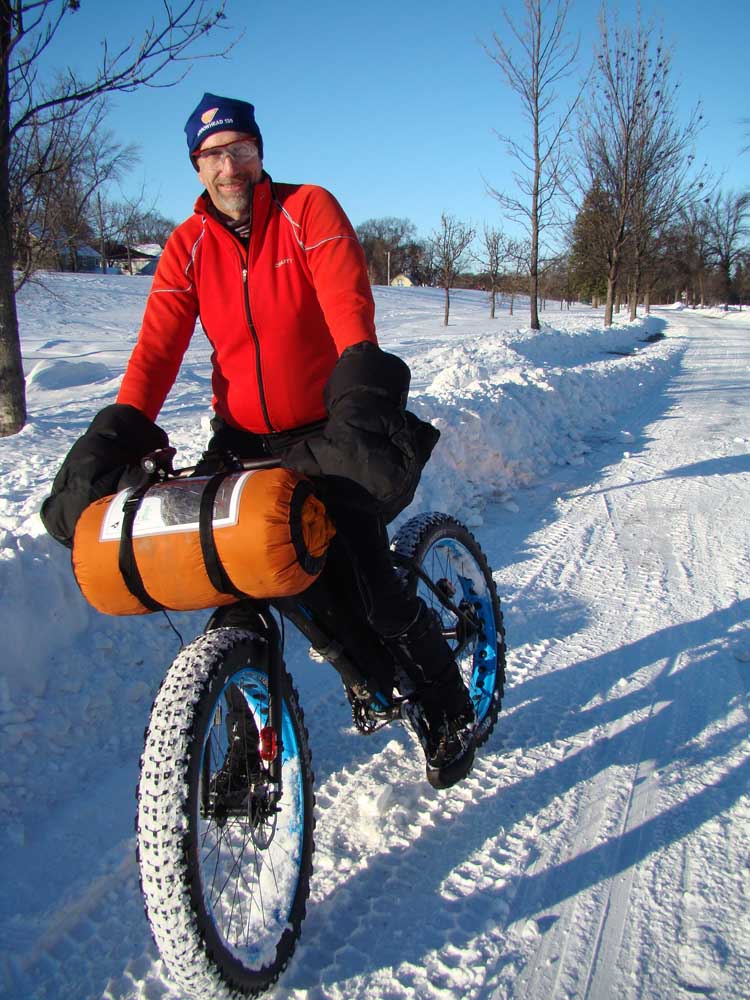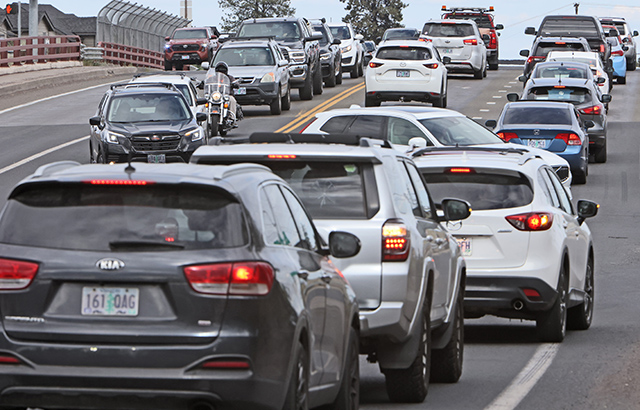Cyclist competes in his 6th winter race, ‘for the suffering’
Published 12:00 am Thursday, February 15, 2018

- Scott Jensen raced his sixth Arrowhead Ultra, a 135-mile winter race on foot, bicycle or skis in chilly Minnesota. (Brad Dokken/Grand Forks Herald/TNS)
GRAND FORKS, N.D. — The first year he raced the Arrowhead Ultra in 2013 was probably the toughest, Scott Jensen says; he almost dropped out.
Exhausted after spending the previous 20 hours pushing his fat bike through 35 miles of soft snow that was too mushy to ride in the warm conditions, Jensen, of Grand Forks, trudged into the third checkpoint on the 135-mile race route prepared to throw in the towel.
Trending
Somehow, though, he found the inner drive after a short rest to continue the grueling wintertime race that takes 150 or so competitors on foot, bicycle or skis from International Falls to Tower, Minn.
He completed the race in 52 hours, 18 minutes.
“Everybody else behind me quit,” Jensen said. “I just decided, I’m here, I took the days off from work, I’m going to push it so I started off again.
“It takes a lot to keep going.”
An attorney, Jensen, 56, was back this year for his sixth Arrowhead Ultra, a race first held in 2005. He placed 23rd this year after clocking in at 24 hours on the dot.
After nearly dropping out that first year, he trimmed more than 18 hours off his time in 2014, a year when the temperature along the trail route dropped to 34 below zero.
Trending
Jensen placed 16th that year, his best finish to date.
“All the good bikers quit,” he said with a laugh.
On a recent balmy January afternoon, Jensen was riding his Salsa Beargrease fat bike to train for the race. Whether on mountain bike, fat bike or traditional road bicycle, Jensen says he tries to ride at least three to four hours every day year-round, sometimes up to 100 miles, and compete in one race a month.
It’s part of a fitness regimen that’s been a way of life for the past 15 years, Jensen says.
“I went 25 years from age 17 to 42 getting zero exercise,” Jensen said. “I didn’t even walk. So, I started to try to do something a little better. I lost a bunch of weight, and I decided I’m going to exercise a little. And I think every year, I decided to do a little bit more.”
The Arrowhead Ultra definitely qualifies as “a little bit more.” Jensen says people often ask why he puts himself through it, given the risks of riding the remote landscape in all kinds of weather conditions.
“We call it Type 2 fun,” he said. “It’s fun when you think about it later. The year it took me so long, I got (within feet) of a wolf. It just sat there, right on the trail, and eventually it got up and ran away. There are just cool things to see, but there are a lot of moments when it’s tough, too.
“I enjoy the challenge of it.”
Arrowhead rules require participants to carry a sleeping bag rated to 20 below zero, a sleeping pad, bivy sack or tent, a stove, 8 ounces of fuel at all times, a headlamp or flashlight, flashing red LED lights, 10 inches of reflective material front and back, at least 3,000 calories worth of edible food and a whistle on a string.
Jensen says he prefers to power through rather than try to camp along the route.
“I just keep moving,” he said. “You’re soaking wet, and I think you’re going to get in trouble if you stop.”
For clothing, Jensen says he dresses in layers, added a base layer for every 10-degree temperature drop. He buys boots a couple of sizes too big, wearing two pairs of socks with plastic bags between the inner and outer layers.
“The inside layer will be wet, but it will be warm,” Jensen said. “That will get me through 35 below zero.”
Racers also carry Spot Tracker devices, allowing people to follow their course online in real time along the race route. The device also has an SOS alarm to alert organizers in case a racer gets into trouble.
“People do get hurt,” Jensen said. “It’s hilly in places so you can get going pretty fast, and if you get a little sketchy on the downhills, you can crash pretty good.”
Jensen says he doesn’t focus on beating his previous finish times because the weather and snow conditions vary so drastically from one year to the next.
He admits, though, he wanted to top last year’s time, when he finished the race in 24 hours, 19 minutes. He accomplished that by 19 minutes.
“You know it’s going to be fun,” Jensen said before the race. “You know you’re as ready as you’re going to be. You know there’s going to be pain, you know there’s going to be suffering. And that’s why we do it — we do it for the suffering.”








